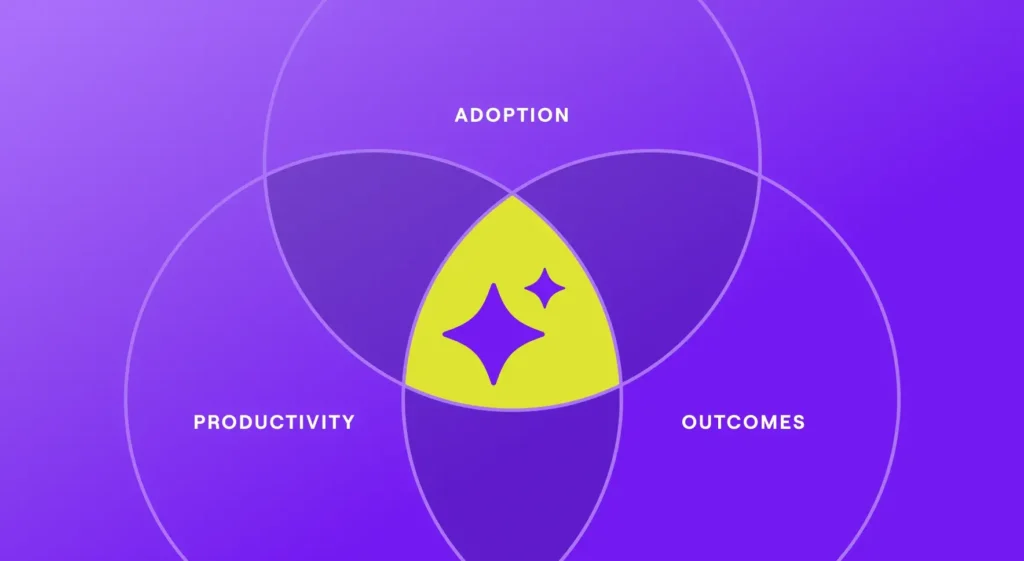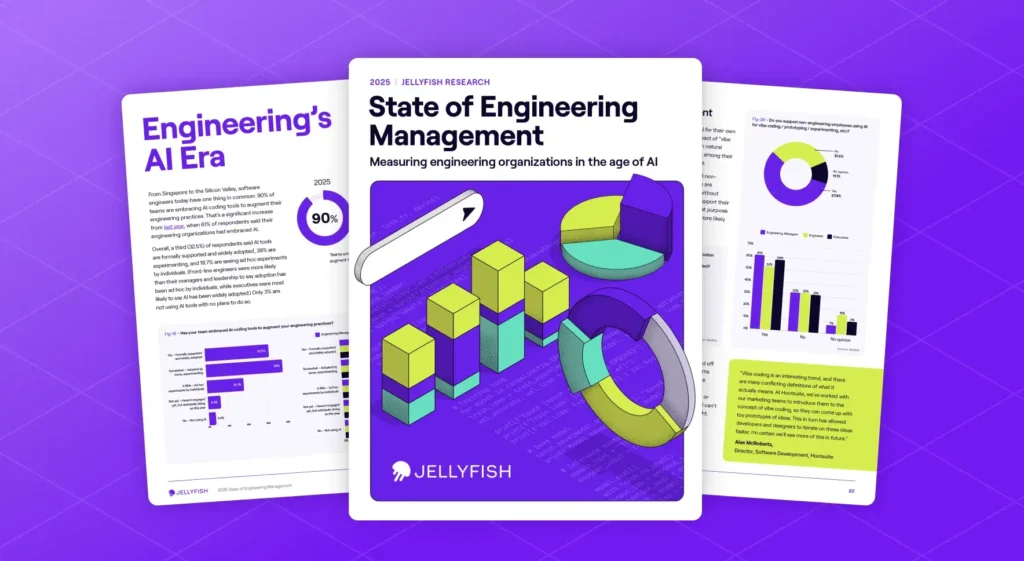What is Agile Transformation?
Agile transformation is a process where an organization modifies its operations from traditional methodologies to agile principles, leading to improved collaboration and productivity. Essentially, it focuses on adapting the agile methodology in all areas of the organization. This paradigm shift doesn’t just apply to software development. It involves a total reimagining and restructuring of existing corporate frameworks.
Agile transformation is critical because it:
- Facilitates faster development and delivery of products or services
- Enhances customer satisfaction
- Improves adaptability in response to change
Management plays a pivotal role in embracing agile transformation successfully. It is imperative that leadership not only understands what agile means but also appreciates its overarching benefits. Their commitment will often set the pace for the entire organization’s shift towards agile practices. If they don’t lead, who will follow?
Management must first establish a clear vision and a roadmap for the agile transformation process. This includes:
- Transitioning from a project-based approach to a product-focused mindset
- Addressing any resistance to change
- Providing the necessary tools and training to staff members
A successful agile transformation leads to applying agile principles far beyond software development. It applies to areas like adaptive planning, early delivery, and continued improvement. It essentially enables an organization to adjust swiftly to market changes, optimize product delivery, and exhibit enhanced customer responsiveness.
Transparent communication, consistent feedback, and a noticeable shift in the organizational culture are signs of successful agile transformation.
Agile software development forms the nucleus of any agile transformation initiative. As an iterative method, agile software development hinges on close collaboration between cross-functional teams, emphasizing adaptability and customer satisfaction. It uses time-boxed phases – known as sprints – along with frequent refinement informed by prioritized tasks, continuous integration, and seamless feedback mechanisms.
The methodology fosters transparency and accountability, streamlining the process to resolve issues quickly and enhance product quality.
Agile development is an overarching concept relevant to agile software development and several other business practices. It encompasses applying agile principles to areas beyond software engineering, including HR, marketing, and operations.
Agile development accentuates iterative progress, continuous feedback, and value delivery, resulting in improved adaptability, customer satisfaction, and overall productivity.
However, the journey to a fully agile environment is often challenging for businesses because it requires commitment, resilience, and sustained effort. Agile transformation takes more than implementing certain practices and tools. It’s fundamentally about nurturing an agile mindset and culture, which can take time and hard work as people adjust to changes.
In the long run, embracing such principles makes it a lot easier for companies to adapt to disruptions and continue to deliver value to their customers in ever-changing market conditions. By understanding and implementing these concepts effectively, companies can ensure a successful agile transformation, maximizing productivity and effectively responding to their customers’ fast-changing needs.
Through agile transformation, organizations are not merely reacting to changes but breathlessly keeping pace with them. In this dynamic business landscape, adaptable companies are the ones that persist and prosper. Agility serves as their trusted ally in achieving these goals for long-term success.
Agile Transformation Strategy
Agile transformation strategy marks a paradigm shift in an organization’s standard operations by infusing agility into its practices. It pertains to recognizing and incorporating agility across the board to provide customer-centered, lean, efficient solutions. As the cornerstone of business agility, it guides companies along the path of change, ensuring responsiveness, adaptability, and sustainable growth.
The process of agile transformation is seldom a one-size-fits-all approach. It requires a lean-agile transformation model that emphasizes producing value with minimal waste through distinct phases of change.
This evolution starts with assessing the current strengths and limitations of the organization. Findings serve as the basis for formulating a vision of change focused on agile principles. The testing and adjustment phases then work to deliver incremental value by iteratively honing processes and systems.
Constructing an agile transformation roadmap is part and parcel of this journey. Essentially, this roadmap visualizes the change strategy, outlining the steps required to achieve the desired agile maturity level. It takes into account the specific business objectives and priorities to map out the transformation course. This roadmap helps the organization navigate the transformation’s complexities, ensuring alignment of teams, resources, and processes with the agile principles.
An agile transformation framework forms the backbone of the process, providing an overarching structure that can be tailored to different contexts and needs. Depending on the organization’s size, maturity, and goals, frameworks like Scrum, Kanban, Lean, XP, and DSDM (Dynamic System Development Method) could come into play.
These frameworks not only facilitate the operational aspects of agile but also assist in creating an environment conducive to collaboration, transparency, and customer value.
Charting the course of agile transformation involves several steps. Recognizing that this journey is iterative and requires continuous improvement is crucial. Initially, the focus is on understanding the organization’s current stage, culture, and practices. Then comes the key phase of defining the transformation strategy and objectives, prioritizing them based on the business needs.
With this strategy as a reference point, you start initiating the transformation by starting with a pilot project. The lessons and insights derived from the pilot inform scaling agile to other projects or teams.
The agile transformation strategy framework is a hybrid model that incorporates the best aspects of both agile transformation strategy and frameworks. The strategy concerns the “what” and “why” of the transformation. The framework focuses on “how” to implement the strategy. This unifying model ensures a holistic approach to agile adoption, enriching the organization’s pursuit of agility with clarity, coherence, and control.
An agile transformation strategy involves deep-seated change, unprecedented collaborative angles, and a customer-focused approach. Agile champions understand that the journey of transformation is iterative and requires consistent effort, adaptation, transparency, and continuous learning. By understanding the nature of this transformation and identifying the right frameworks and strategies, leaders can successfully steer their organizations toward greater agility and overall business performance.
Benefits and Challenges of Agile Transformation
As a concept steeped in robust methodologies and innovative philosophies, agile transformation presents many organizations with unique opportunities to streamline their processes, enhance collaboration, and deliver exceptional value to their customers.
When defining the intrinsic value of agile transformation, it is impossible to sidestep this path’s tangible benefits. Delving deeper into the advantages of agile transformation, it becomes apparent that its strengths lie in fostering a responsive, flexible business environment. When companies undergo agile transformation, they align their operations to the principle of agility – promoting swift response to changes and fostering innovation.
The imperative of speed and adaptability form the core of agile transformation, allowing organizations to be more responsive and quickly pivot in the face of unprecedented challenges. The agile transformation journey requires a profound commitment to iterative development and customer satisfaction. The journey is often difficult, but it builds an organizational culture where small, cross-functional teams work in iterative sprints to deliver timely, high-quality products or services.
By focusing on customer feedback and constant iteration, agile organizations ensure they meet customer needs more promptly and effectively. This approach, while demanding an initial investment of resources, can significantly improve customer satisfaction rates and ensure the business’s longevity.
However, the process of agile transformation is not without its challenges. As with any transformative change, transitioning to agile methodologies can involve considerable changes in the organization’s existing processes. For instance, old hierarchies and management styles might resist change, creating hurdles in the agile transformation journey. Negotiating these agile transformation challenges requires strong leadership and a solid understanding of agile principles. It could potentially involve restructuring entire teams, retraining staff, and redefining roles and responsibilities.
Such significant changes can create initial resistance that impacts team morale and productivity in the short term.
Agile transformation consulting can offer invaluable assistance to organizations facing these challenges. With their seasoned expertise in agile methodologies, these consultants can offer guidance to steer the business through the implementation process. They can:
- Demystify agile principles
- Decipher complex terminologies
- liProvide strategies to tackle resistance to change
It is imperative that organizations invest in such consulting services to mitigate the possible pitfalls of agile transformation and ensure a smoother transition.
Embracing an agile strategy requires a radical culture shift inside an organization. Companies need to create an environment conducive to innovation where failure is accepted as a stepping stone towards success. However, transforming an organization’s culture demands patience and perseverance.
As long as business leaders and employees stick with the process, the rewards of successful agile transformation – increased productivity, improved customer satisfaction, and faster delivery – make the challenges worth overcoming.
Agile transformation offers a wealth of benefits to organizations willing to embrace its methodologies. It implies a shift towards a more flexible, customer-centric approach. Still, overcoming the unique challenges of this transformation requires strategic guidance. Agile transformation consulting can give your organization effective directions and insights that help ensure success.
Through a relentless commitment to agile principles and a willingness to negotiate inevitable challenges, companies can make their agile transformation journeys successful.






